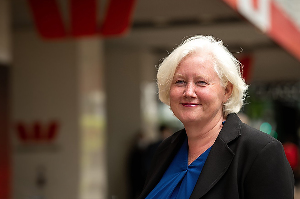
Their resilience is showing in Cotality’s latest buyer classification data as owner-occupiers remain cautious.
The country’s housing market is being reshaped with a notable shift in buyer make-up as first home buyers account for 27% of all purchases – well above their long-term average of 21-22%.
Cotality chief property economist Kelvin Davidson says first home buyers are holding their strongest position in two decades, taking advantage of lower property values compared to the peak, access to KiwiSaver for at least part of their deposit, and the banks’ low-deposit lending allowances.”
The latest data confirm first home buyers are being buoyed by subdued house prices and targeted supports.
Although national values are down almost 17% from peak levels, they have remained broadly flat this year, with the Cotality Home Value Index unchanged since December 2024.
Big cuts in prices
Realestate.co.nz data shows prices are going nowhere. More than $82 million was cut from residential property asking prices in the second quarter of this year – nearly $20 million more than in first quarter.
Most sellers dropped their asking price by an average $40,310, but one vendor took $750,000 off the price of their Auckland lifestyle property.
Although the 21 per cent drop is significant, it is small fry considering sellers wiped $108 million property off their prices for the same quarter last year.
Despite the drop in interest rates, house prices are not moving.
The web portal’s data shows the region with the biggest total price drop was Auckland at $20,529,579, followed by Waikato at $9,443,509, and Wellington at $8,203,001.
Those regions with the lowest price drops were: West Coast, $248,000; Gisborne, $270,000; and Wairarapa, $1,026,500.
Realestate.co.nz spokeswoman Vanessa Williams says the $80 million cut from property prices shows sellers are having to make bigger adjustments to meet buyers’ expectations.
Davidson says this has created an opportunity for new entrants, especially in more affordable regions and lower-priced city suburbs.
“Conditions are tough for many households, but for buyers looking to enter the market for the first time, softer prices and reasonable access to credit have created a window of opportunity for the next generation to secure a property. As a result, we’re seeing both the share and raw number of first home buyers deals rising.”
Existing homeowners cautious
On the other hand, movers remain quieter than normal as affordability constraints linger and the challenges of high transaction costs and uncertainty roll on too, whether that’s due to jobs or the economy more broadly.
Movers’ buying share has fallen to the lowest levels since 2009. Despite a gradual rise in sales volumes nationally, up about 5% year-on-year in July, albeit off a low base, existing homeowners remain cautious.
Davidson says many potential movers seem reluctant to take the leap, potentially because they’re uncertain about their ability to get a timely sale and a strong price for the existing home before they can start to ponder the next one.
Mortgaged multiple property owners (investors) have returned, normalising after several years of weakness.
Their property buying has lifted from 21 per cent in the middle of last year to 25 per cent of transactions in July – in line with historic norms.
Changes in both policy and financing costs have been pivotal in stimulating this momentum, Cotality chief property economist Kelvin Davidson says.
Smaller and new investors are particularly active, targeting lower-value existing property as well as come new builds.
“The return to 100% mortgage interest deductibility has eased the tax bills, and lower mortgage rates have reduced the cashflow top-ups needed to hold an investment.”
He says this has shifted the balance for many landlords, allowing them to re-engage in the market and for newer investors given them the incentive to build a portfolio in more favourable conditions.
Ready to roll
Cotality says while banks appear to remain cautious, particularly with loan-to-value ratio (LVR) rules, some investors are steadily increasing their borrowing at lower LVRs.
At the same time, a large portion of existing loans are about to roll onto lower rates, which could ease household cashflows and free up capacity for new borrowing.
About two thirds of mortgages are fixed and due to reprice in the next 12 months, with many households likely to see reduced repayments as rates fall.
“Lower mortgage rates have supported buyer demand, but the weak labour market and subdued economy are offsetting factors. Credit conditions remain an important filter on who can and can’t transact,” Davidson says.
He says first home buyers set to remain active, movers constrained, and investors steady, depending on policy and interest rate paths.
“The composition of buyers is arguably just as important as the headline sales numbers.
"Movers may continue to sit below their historical share, but they still drive a large portion of transactions in many areas.
“For investors, improving conditions point to a consistent level of activity and stable market share.
“And while first home buyers won’t stay at record highs indefinitely, even a smaller slice of a busier market would still see them active in greater numbers," Davidson says.




Comments
No comments yet.
Sign In to add your comment